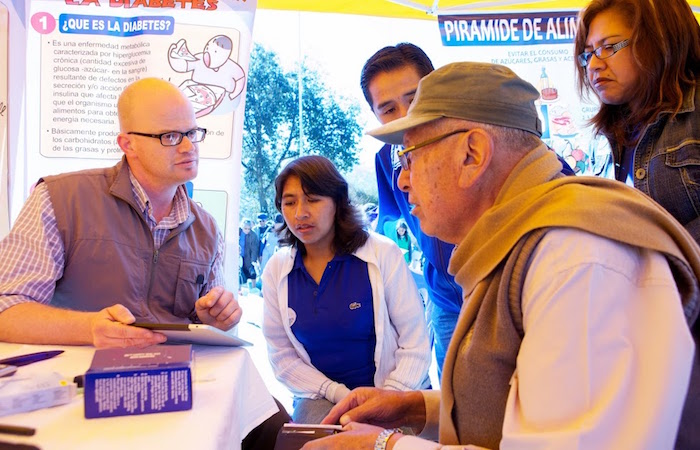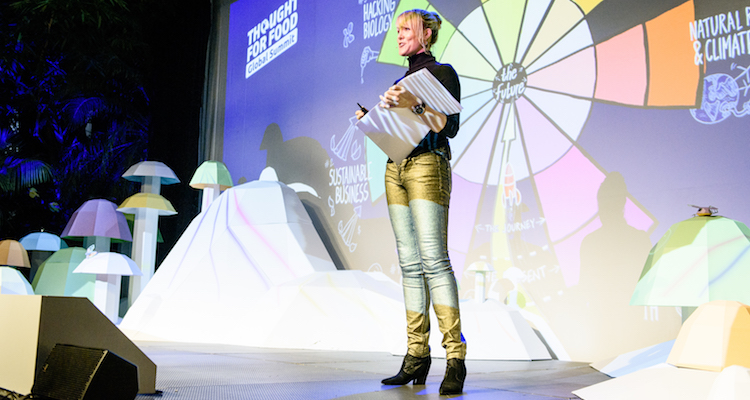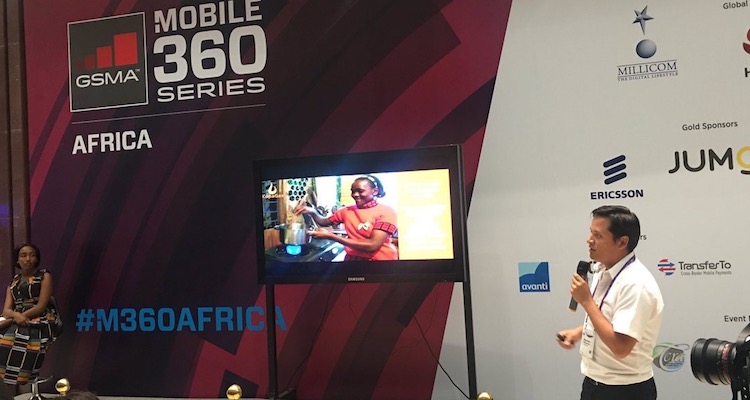Listen Now
This is episode 100 for the show – a milestone, quite honestly, I had no idea if we’d ever achieve. But here we are and I wanted to take a moment to send out a huge heartfelt thanks to the previous guests on the show – it’s been a fantastic ride. I also want to thank the thousands of people who have downloaded or listened to the show; you’re the whole reason Aidpreneur exists and I hope you keep tuning in. Over the last two years, we’ve had some pretty amazing conversations with development and aid professionals about how they’ve “Made it” and what tricks and tips they have for creating a sustainable and satisfying career. I’m happy to say that I think we have a fairly solid answer to that question. And, because of this, it is time for the show to pivot to a new topic – one that I find more fascinating everyday, but also one that is increasingly on the forefront of our community’s thought leaders: Innovation. Going forward, I’ll be talking with guests who are on the cutting edge of innovation in how we deliver development and humanitarian aid assistance and we’ll be investigating how innovation happens, what innovations are out there now and what the future might hold. So, without further adieu… I can’t think of a better way to kick off this new direction than with Andrew Schroeder. Andrew Schroeder is the co-founder of WeRobotics, a global non-profit organization which works with local communities and international organizations to accelerate aid, development, environmental protection and global health with robotics technologies. Andrew is also the Director of Research and Analysis for Direct Relief, a non-profit organization based in Santa Barbara, CA which distributes essential medicines to local healthcare programs in over 100 countries. Andrew is a globally recognized leader in the use of spatial analysis and geographic information systems (GIS) for humanitarian aid and health. In 2013 Andrew won the President’s Award from ESRI for his contributions to GIS for social good. He received his PhD in Social and Cultural Analysis from New York University and his Master’s in Public Policy from the Ford School of Public Policy at the University of Michigan. You can connect with Andrew here: https://www.linkedin.com/in/aischroeder https://twitter.com/simulacrandrew
IN TOR 100 YOU’LL LEARN ABOUT:
- Applying cutting edge innovation on humanitarian aid and relief first, through Andrew’s initiatives in mapping (Direct Relief) and robotics (WeRobotics).
- The case for embedding technological innovation into humanitarian work.
- The right way to approach technology in humanitarian work and relief response. Hint: put people first.
- The great effort needed to integrate diverse data, and the great payoffs for delivery systems, from NYC to West Africa.
- Andrew’s illustration of the innovation cycle, from a prototype to large scale humanitarian implementation.
OUR CONVERSATION INCLUDES THE FOLLOWING:
Organizations
- WeRobotics http://werobotics.org
- Direct Relief https://www.directrelief.org
- SAP
- Humanitarian UAV Network http://uaviators.org
- UN OCHA
- World Bank
- Red Cross
- DJI (UAV manufacturer)
- Palantir Philanthropy
- Google Maps
- Vayu Aircraft http://www.vayuaircraft.com
- Singular University
Topics
- Fast Company’s World’s Most Innovative Companies in 2015 in Not-For-Profit (#8: Direct Relief) http://www.fastcompany.com/3041659/most-innovative-companies-2015/the-worlds-top-10-most-innovative-companies-of-2015-in-not-fo
- Robotics
- 3-D mapping, multi-spectral imagery
- Integrated Risk and Data Integration
- Geographic Information Systems (GIS)
- Ebola, and the 2014 West Africa Outbreak
- Sensor technology
- Drones
- Artificial Intelligence, Autonomous and Semi-Autonomous Activity
- Data Integration
- Hurricane Sandy (2012)
- Medical Facilities and Health Service Delivery Network
- Homeless Population
- Defined (Bounded) and Open (Unbounded) Innovation
- Technology Adoption: User Base, Workflow Incorporation
Places
- Santa Barbara, CA
- Sierra Leone
- Liberia
- Kathmandu, Nepal
- New York City (NYC), NY
EPISODE CRIB NOTES
WeRobotics Started recently with colleagues from the commercial drone world. Focused on developing new robotic application models in the development world. Building innovation labs in areas of the world with “integrated risk.“ Kathmandu, Nepal. Robots for disaster assessment surveys, 3-D modeling. Director of Research and Analysis, Direct Relief Distributor of essential medicine. Supporting the medical system. Reconnecting people with medicine flows after natural disasters. Statistical analysis and Geographic Information Systems (GIS). Cross-referencing areas highly vulnerable to natural disasters to the kinds of illnesses and medicine requirements of their inhabitants. Ranking on the Inc’s top 10 most innovative nonprofits From their job on the Ebola crisis. Direct Relief customized an SAP module to map the spread of disease. Commercial standards for their distribution system. Research applied to efficient delivery. Role of data is crucial. Working with large scale pharma allows them to speak the same language. Working with local drug delivery shops too. The divergence is no longer. “Not a two-track system anymore.“ “Extremely lean approach, particularly for a nonprofit.“ WeRobotics, in partnership with Patrick Meier (TOR 061) Fellow drone geeks. Collaborating since 2014 on the Humanitarian UAV Network, Patrick’s brainchild. Andrew was involved in experimentation, mapping. Patrick reached partners: OCHA, World Bank, Red Cross, and Direct Relief. “Incredible amount of work. Hard to sustain.” Challenges after Nepal’s earthquake, they are asked to help but coordination between local partners and technologists was not yet in place. “The robotics are important, we need to stay in touch with the rapid development of the field,” but local implementation is everything. Rapid development of the field Leaps in sensor technologies. Vehicles to map their surroundings, avoid obstacles (DJI’s Phantom 4, soon to mass market). Cheaper and lighter tech: multi-spectral imagery. Signal processing software, cloud and distributed computing. Artificial Intelligence allowing for robotic semi-autonomous activity, fully autonomous in some cases. New levels of collaboration between people and machines. “Humanitarians are traditionally not right at the forefront… but we are often the people who deal with the places which will push these models most effectively.” It’s all about keeping sight of the use cases. Mapping, prediction: relief disruption The biggest thing: data integration. “Even though it’s not sexy.“ Data comes from third partners, surveys, own processes, open sources. It’s wide and varied, diverse. Putting it all together coherently is perhaps the most fruitful challenge. Example: Disease reporting relative to economics, relative to distribution network and infrastructure, weather and long term climate patterns. Approaches take effort, and it’s worth it: GIS applications. Partnerships with Palantir Philanthropy, SAP. Progress is a matter of efficient integration that affects decision making. Heartwarming tale of more adequate resource allocation Hurricane Sandy in NYC. Lot of misinformation about resources, capabilities and requirements of the city’s medical system. “There was not necessarily a pre existing landscape.“ Power outages were not properly considered, as it was not the spikes in demand for fuel. Andrew plugs into the model the gas stations, and individuals involved with homeless outreach on the ground. Gas demand from the homeless was not an issue up until then. Insights after the hurricane has allowed for better procurement of gas to the homeless. The homeless response to the hurricane, particularly displacement, is a distinct and rare phenomenon. “We don’t need to know that for everyday humanitarian aid, but when I do need to I need to be able to put all the data back together and point it to the key problem, in this case access to services for homeless adults and families.“ Disasters can strike in any area and the key to successful response is framing and connecting. Relief must be able to plug with the people who can provide access to the information. Examples are roads, telecommunications, health infrastructure. Then it’s about supplying the right parts of the system the right way. “Ebola was a systems issue.” People began avoiding health facilities, thus affecting their access to proper care, particularly at childbirth. Responses should be able to deal with the emergency while affecting general service delivery as little as possible. And for that, inter agency reporting is key. How innovation happens, at small and large scales “I don’t often think about how it happens. I just go ahead and do things. Maybe that’s why innovation happens.“ In Direct Relief there is “A very defined problem set. There is a gap and we must find ways to fill them.“ Andrew’s role is approaching the problem from different points of view. Balance between specificity and potential technology applications produce a propitious innovation context. GIS has allowed to produce answers to many problems, some non-geographical. In WeRobotics, “the problem set is very open. The number of things that could be addressed is quite broad“: Disaster relief, aid, global health, environmental protection. But the technological approach is specific: “Computers that are able to act in the world, enabling action at a distance.“ Yet again, the same contrasting ranges are the place where innovation takes place. “Contradiction forces you to be creative.“ Both approaches are “from the ground up,” focus on people benefits first. Andrew tries to listen closely, often going to the field. Technology transfer must ensure articulation, making sure what people are going to do. Interacting with locals opens up new solutions, that would have never come up otherwise. New normals and when robotics will be standard relief practice “It happens in a bunch of different ways.“ Combination of cost, access, user base. Drones were expensive, complex, mostly military, inaccessible just five years ago. When a lot of people adopt the technology “it changes the research on what it does,” new uses unsuspected by the very inventors. It creates “fluency, and undercurrent, learning in unexpected ways.“ Then, the comfort level of organizations changes. Systems begin to be developed, incorporated into workflows. This is the “real transformative moment” in humanitarian work. GIS is a perfect illustration. Its pivotal moment was Google Maps and the API. For drones, the pivot is arguably DJI. Who is Andrew following Drones. Robotic delivery in emergencies, access to remote areas. Vayu: Vertical take-off and landing aircrafts with up to kg load for km spans. Adapted for health systems in remote areas. Singularity University projects with multi-rotor drones.Please share, participate and leave feedback below!
If you have any feedback you’d like to share for me or Andrew, please leave your thoughts in the comment section below! I read all of them and will definitely take part in the conversation. If you have any questions you’d like to ask me directly, head on over to the Ask Stephen section. Don’t be shy! Every question is important and I answer every single one. And, if you truly enjoyed this episode and want to make sure others know about it, please share it now:[feather_share show=”facebook, twitter, linkedin, google_plus” hide=”reddit, pinterest, tumblr, mail”]
Also, ratings and reviews on iTunes are very helpful. Please take a moment to leave an honest review for The TOR Podcast!




